“There is old saying: Death is the black camel that kneels unbidden at every gate. Tonight black camel has knelt here.”—Warner Oland as Charlie Chan.

The Black Camel (1931) is the earliest existing film in the famous Warner Oland Charlie Chan series. The first, Charlie Chan Carries On (1931), is lost, as are the three films that follow The Black Camel. For that matter, The Black Camel was considered lost until the 1970s, so when I was growing up, Charlie Chan appeared to just start full-grown with 1934’s Charlie Chan in London. As a result, we missed the development of Oland’s Chan, and while we only get a glimpse of it with this one film, it’s fascinating to see just how much the character changed in three years. By 1934, Charlie had been made “safer” for mass consumption—in other words, less threatening to and outspoken with the white characters. In The Black Camel that isn’t the case. It’s also the only one of the existing Oland movies based on a novel by Chan creator Earl Derr Biggers, as well as being the only Charlie Chan movie that was actually shot on location in Charlie’s home town of Honolulu. (The scenes shot at the Royal Hawaiian Hotel are worth the price of admission by themselves.) None of this, of course, says anything about whether or not the mystery is any good. Happily, it is a very strong whodunit—apart from one amazing plot hole that leaps out at you if you think about it—with Oland in fine form, here finding himself teamed with Bela Lugosi (fresh from Dracula) as the sometimes helpful mystic Tarneverro. For those familiar with the later Charlie Chan movies, The Black Camel is revelatory. For anyone else, it’s a great introduction to the series.
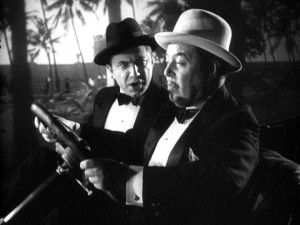
For those of you who don’t know, Charlie Chan and I go back a good way. He was a character I encountered on Saturday afternoon TV—he replaced the Tarzan movies in our area—when I was nine or thereabout, so it’s hard for me to remember when he wasn’t a part of my life. He became more of one in the late 1980s when I wrote the book Charlie Chan at the Movies. Of the 44 movies that were made—starting with Charlie Chan Carries On in 1931 and ending with The Sky Dragon in 1949—40 were then (and are now) known to exist, but back the 1980s a mere handful were commercially available, making the mere act of getting copies of them to work from difficult. None was more difficult than The Black Camel. Now, of course, you can buy it on DVD any day of the week—and if you’re brave enough, you can listen to the audio commentary that DVD series producer John Cork and I did for it, too. (I freely confess I have never been that brave.) Times change.
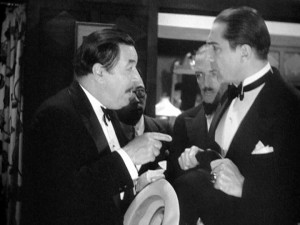
While Oland appears completely at home as Charlie Chan—and remains the definitive actor in the role, or as later co-star Keye Luke (who played Charlie’s “Number One Son,” Lee) put, “the complete Charlie Chan”—this is a more spry and considerably more outspoken rendering of the character than the one we would later get. That also makes Charlie more the character as Biggers wrote him in the books. It’s still a bit of a shock to see Charlie actually snap back at the suspects. Particularly startling—for those familiar with the later films—is the scene where, recovering from being slugged during one of those typical mystery film moments where the lights go out, he threateningly tells the assembled throng, “Am not in mood tonight to turn other cheek, but will return assault with compound battery.” A few years later this would be unthinkable.
It should be addressed that the films and the character have come under a good deal of attack in recent years for being “politically incorrect.” This became a very heated issue around 2000 when the Fox Movie Channel was forced (some say at the behest of Mrs. Rupert Murdoch, but this has never been substantiated) to cancel a series of screenings of the newly restored films. I even got roped into going on Alan Colmes’ radio show to defend the film, and it quickly became obvious that the majority of the detractors actually knew very little about the films and had seen few, if any, of them. A lot of the point, of course, centered around the idea of white actors impersonating Asians, which is understandable, but fails to take into account when the movies were made. Things like this have to be judged in the context of their time, and, regardless of the race of the actors, these movies were a huge step forward in the depictions of Asians on the screen. Prior to these films, Asians had been almost without exception depicted in villainous roles. Oland himself came to the series fresh from playing the insidious Dr. Fu Manchu in a series of three movies for Paramount. (Oland’s features got him cast in Oriental roles early on. Oland himself was convinced he was partly of Asian descent.) Here, for the first time, were movies with a Chinese hero—moreover, one who was smarter than the white characters. That’s no small accomplishment in itself.
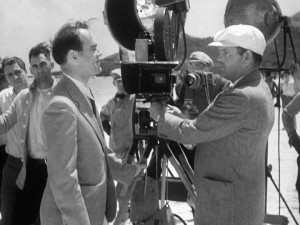
The film itself is a fairly faithful adaptation of Biggers’ novel, which means it adheres to the usual pattern of the books and depicts a long-delayed revenge killing, so that the answer to the mystery is shrouded in the past. The story here is actually grounded in a famous Hollywood scandal—the never solved murder of Irish-born movie director William Desmond Taylor, who is here turned into Irish-born actor Denny Mayo. (His Irishness is implied, but it’s also part a parcel of the story’s plot hole.) When the story starts, Mayo has been dead for three years, but his old girlfriend actress Shelah Fane (Dorothy Revier) is on location making a picture in Honolulu. (Black Camel director—and unsung architect of the Charlie Chan film series—Hamilton MacFadden has a small role as the director of her movie.)
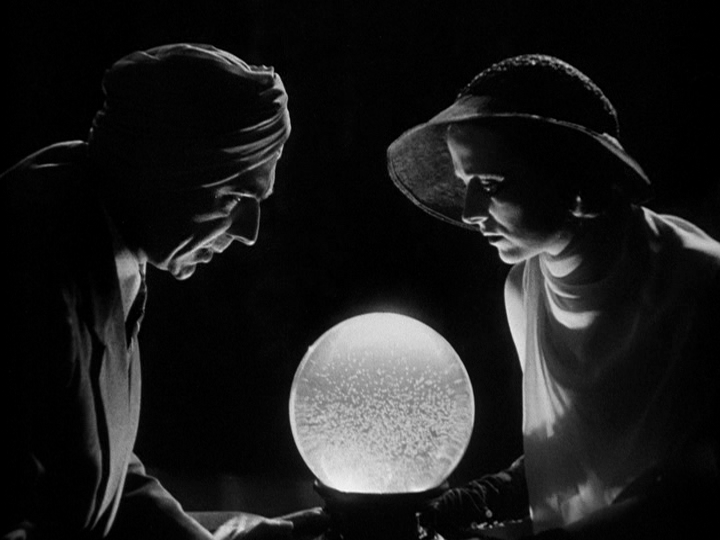
Also in Honolulu—ostensibly to advise Shelah as to whether or not she should marry wealthy Alan Jaynes (William Post, Jr.)—is professional crystal-gazing mystic Tarnaverro (Lugosi), who is been cautioned against plying his trade by Charlie. But Tarnaverro has reasons of his own for being there—reasons that are not necessarily in Shelah Fane’s best interests. He is investigating the murder of Denny Mayo on his own and in an absolutely beautifully lit and staged crystal ball reading with her, he manages to get her to tell him (but not the audience) the story of what happened the night Mayo was murdered. (The scene, of course, is the kind of thing Lugosi was born to play and he gets all the good out of it.)

It’s fairly obvious where this going, since Tarnaverro subsequently asks Charlie if it would surprise him if he asked him to arrest a murderer. “No,” opines the unflappable Inspector Chan, noting, “All foxes come at last to fur store,” but his attempts to get further information are to no avail. “You quench fire of my curiosity with handful of straw!” complains Charlie. Not surprisingly, before anything is done in this matter, Shelah is murdered and Inspector Chan is on the case—with the help (and sometimes hindrance) of Taranverro, not to mention his Japanese assistant, Kashimo (Otto Yamaoka), whose position with Honolulu Police Department is rather vague.
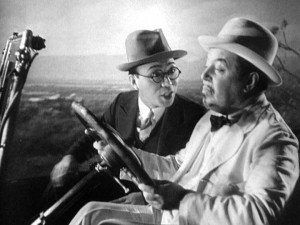
Though the character of Kashimo would be the basis for Charlie’s various helpful offspring (starting in 1935 with Charlie Chan in Paris), this is the only time Kashimo made it to the screen. That’s too bad, too, because this bumptious sidekick gave Charlie the opportunity to unleash a variety of creative verbal assaults at the fellow’s incredible dimwittedness. He denounces Kashimo as a zebra at one point, explaining that that’s a “sport model jackass.” He also notes—as regards Kashimo—that “soap and water never can change perfume of billy goat” and “can cut off monkey’s tail, but he is still monkey.” The poor guy appears to be a zoo all by himself.
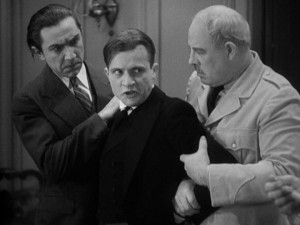
All in all, the film is a solid mystery with a number of agreeable players showing up—a very young Robert Young (his debut), Victor Varconi, Murray Kinnell (the man who brought Bette Davis to the attention of George Arliss and kickstarted her career), Dwight Frye (like Lugosi, fresh from Dracula)—but the picture really belongs to Oland and Lugosi, who play so beautifully off each other that you wish this wasn’t their only teaming.
Stylistically, it’s very much an early talkie, but a pretty adventurous and fluid one. The main thing that gives its age away—apart from the condition of the print—is the odd editing, which was dictated to some extent by the difficulty of editing sound films at this stage.
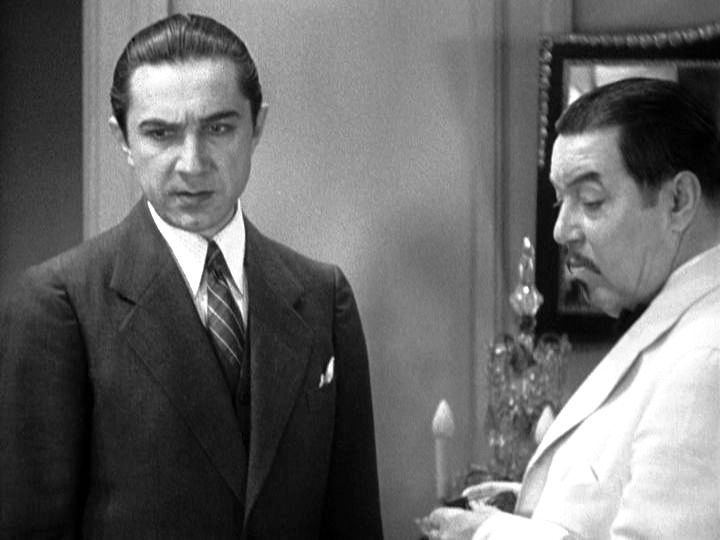
It’s certainly a good looking film—the lighting by cinematographers Joseph August and Daniel Clark is very striking, as is the location work. But perhaps the most interesting aspect is the direction by Hamilton MacFadden. Almost forgotten today (and reduced to playing bit parts in a couple of the later Chan movies), he directed three of the early Chan films and as much as anyone created the template for the long-running series.




Before you comment
The comments section is here to provide a platform for civil dialogue on the issues we face together as a local community. Xpress is committed to offering this platform for all voices, but when the tone of the discussion gets nasty or strays off topic, we believe many people choose not to participate. Xpress editors are determined to moderate comments to ensure a constructive interchange is maintained. All comments judged not to be in keeping with the spirit of civil discourse will be removed and repeat violators will be banned. See here for our terms of service. Thank you for being part of this effort to promote respectful discussion.